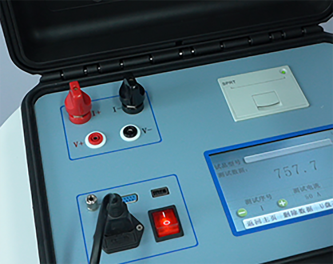 English
English



-
 Afrikaans
Afrikaans -
 Albanian
Albanian -
 Amharic
Amharic -
 Arabic
Arabic -
 Armenian
Armenian -
 Azerbaijani
Azerbaijani -
 Basque
Basque -
 Belarusian
Belarusian -
 Bengali
Bengali -
 Bosnian
Bosnian -
 Bulgarian
Bulgarian -
 Catalan
Catalan -
 Cebuano
Cebuano -
 China
China -
 China (Taiwan)
China (Taiwan) -
 Corsican
Corsican -
 Croatian
Croatian -
 Czech
Czech -
 Danish
Danish -
 Dutch
Dutch -
 English
English -
 Esperanto
Esperanto -
 Estonian
Estonian -
 Finnish
Finnish -
 French
French -
 Frisian
Frisian -
 Galician
Galician -
 Georgian
Georgian -
 German
German -
 Greek
Greek -
 Gujarati
Gujarati -
 Haitian Creole
Haitian Creole -
 hausa
hausa -
 hawaiian
hawaiian -
 Hebrew
Hebrew -
 Hindi
Hindi -
 Miao
Miao -
 Hungarian
Hungarian -
 Icelandic
Icelandic -
 igbo
igbo -
 Indonesian
Indonesian -
 irish
irish -
 Italian
Italian -
 Japanese
Japanese -
 Javanese
Javanese -
 Kannada
Kannada -
 kazakh
kazakh -
 Khmer
Khmer -
 Rwandese
Rwandese -
 Korean
Korean -
 Kurdish
Kurdish -
 Kyrgyz
Kyrgyz -
 Lao
Lao -
 Latin
Latin -
 Latvian
Latvian -
 Lithuanian
Lithuanian -
 Luxembourgish
Luxembourgish -
 Macedonian
Macedonian -
 Malgashi
Malgashi -
 Malay
Malay -
 Malayalam
Malayalam -
 Maltese
Maltese -
 Maori
Maori -
 Marathi
Marathi -
 Mongolian
Mongolian -
 Myanmar
Myanmar -
 Nepali
Nepali -
 Norwegian
Norwegian -
 Norwegian
Norwegian -
 Occitan
Occitan -
 Pashto
Pashto -
 Persian
Persian -
 Polish
Polish -
 Portuguese
Portuguese -
 Punjabi
Punjabi -
 Romanian
Romanian -
 Russian
Russian -
 Samoan
Samoan -
 Scottish Gaelic
Scottish Gaelic -
 Serbian
Serbian -
 Sesotho
Sesotho -
 Shona
Shona -
 Sindhi
Sindhi -
 Sinhala
Sinhala -
 Slovak
Slovak -
 Slovenian
Slovenian -
 Somali
Somali -
 Spanish
Spanish -
 Sundanese
Sundanese -
 Swahili
Swahili -
 Swedish
Swedish -
 Tagalog
Tagalog -
 Tajik
Tajik -
 Tamil
Tamil -
 Tatar
Tatar -
 Telugu
Telugu -
 Thai
Thai -
 Turkish
Turkish -
 Turkmen
Turkmen -
 Ukrainian
Ukrainian -
 Urdu
Urdu -
 Uighur
Uighur -
 Uzbek
Uzbek -
 Vietnamese
Vietnamese -
 Welsh
Welsh -
 Bantu
Bantu -
 Yiddish
Yiddish -
 Yoruba
Yoruba -
 Zulu
Zulu
capacitor tan delta
Understanding Capacitor Tan Delta A Key Parameter in Electrical Insulation
Capacitors are ubiquitous in electrical and electronic circuits, serving to store and release electrical energy. Among the various parameters that characterize capacitors, the tan delta (or loss tangent) is crucial in evaluating the performance and reliability of these components, especially in high-voltage applications. In this article, we delve into the concept of tan delta, its significance, measurement techniques, and its implications for capacitor health and longevity.
What is Tan Delta?
Tan delta is a measure of the energy loss in a capacitor when subjected to an alternating current (AC). Mathematically, it is defined as the ratio of the resistive (real) power component to the reactive (imaginary) power component in a capacitor's impedance. More intuitively, it quantifies the inefficiency of the capacitor’s dielectric material, indicating how much energy is wasted as heat during operation.
Expressed as a percentage, a lower tan delta signifies a more efficient capacitor with minimal energy loss, while a higher tan delta indicates deteriorating insulation quality and increased losses. Typically, tan delta values for high-quality capacitors are in the range of 0.1% to 1%. Values exceeding this range may suggest potential problems such as aging, moisture ingress, or manufacturing defects.
Significance of Tan Delta
The significance of tan delta cannot be overstated, especially for capacitors used in critical applications such as power generation, distribution networks, and industrial machinery. Capacitors play a fundamental role in power factor correction, energy storage, and smoothing voltage fluctuations. High tan delta values can lead to several issues, including
1. Reduced Efficiency Increased energy losses can substantially decrease the overall efficiency of the electrical system. 2. Heating Issues Higher losses can cause overheating, which may lead to dielectric breakdown or reduced lifespan of the capacitor.
3. Risk of Failure An elevated tan delta is often a precursor to capacitor failure, which can jeopardize entire electrical systems and lead to costly downtime or even catastrophic failures.
capacitor tan delta

Measurement Techniques
Various techniques are employed to measure the tan delta of capacitors, with each method having its own advantages and limitations. Common approaches include
- Bridge Methods Using an AC bridge circuit to compare the impedance of the capacitor with a known standard. The results can then be used to calculate the tan delta.
- Capacitance and Power Factor Meters These specialized instruments measure the capacitance and power factor directly, providing tan delta readings as part of their output.
- Resonant Circuit Tests This technique involves subjecting a capacitor to a resonant frequency and measuring the resultant current and voltage to derive the tan delta value.
Choosing the appropriate measurement method depends on factors such as the voltage rating of the capacitor, environmental conditions, and the required accuracy of the readings.
Conclusion
Understanding and monitoring the tan delta of capacitors is essential for ensuring the reliability and efficiency of electrical systems. High tan delta values can be indicative of problems that, if left unaddressed, may lead to significant consequences, including equipment failures and increased operational costs.
As industries continue to embrace advanced technologies and rely on efficient power management solutions, the importance of robust capacitor maintenance practices, including regular tan delta measurements, becomes increasingly clear. By prioritizing the assessment of tan delta along with routine inspections, operators can enhance the longevity of their electrical infrastructure and safeguard against unexpected failures, ultimately leading to more stable and efficient power systems.
-
Ensuring SF₆ Gas Safety: Introducing PUSH’s Integrated SF₆ Analyzer for Dew Point, Purity, and Decomposition MonitoringNewsJul.10,2025
-
Exploring the Main Types of Industrial Endoscopes and Their Applications Across IndustriesNewsJul.04,2025
-
Testing Equipment Industry Sees Major Advancements in 2025: Smart & Precision Technologies Lead the WayNewsJun.06,2025
-
Applications of Direct Current Generators in Renewable Energy SystemsNewsJun.05,2025
-
Hipot Tester Calibration and Accuracy GuidelinesNewsJun.05,2025
-
Digital Circuit Breaker Analyzer Features and BenefitsNewsJun.05,2025



